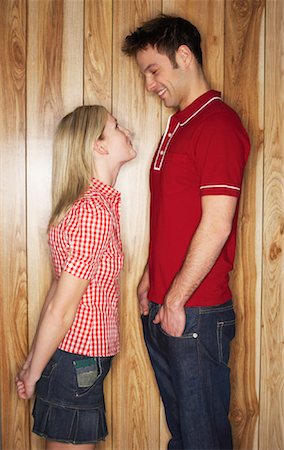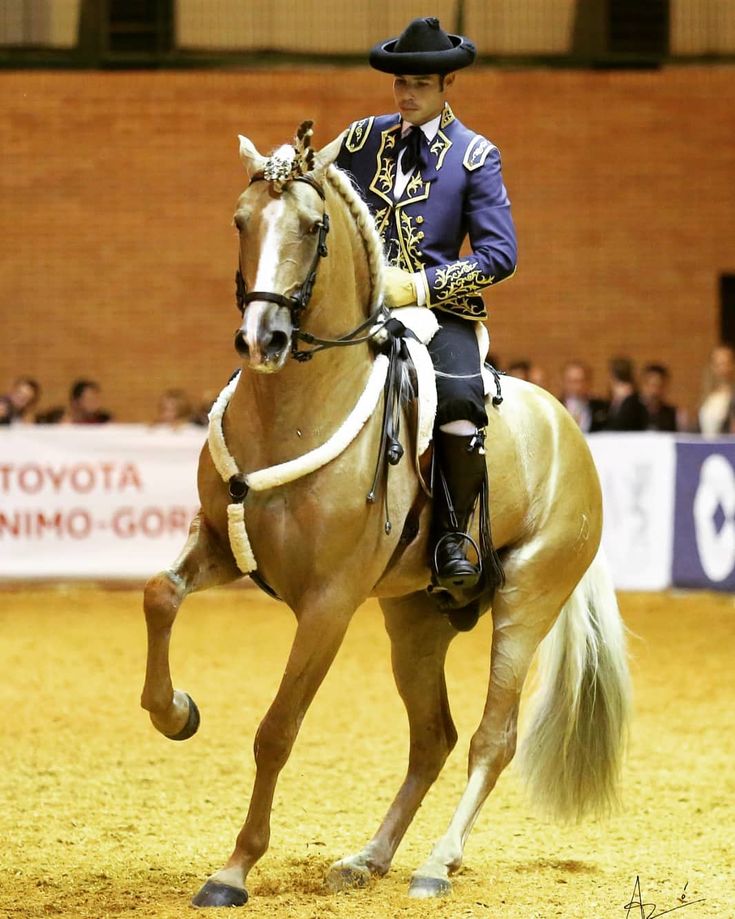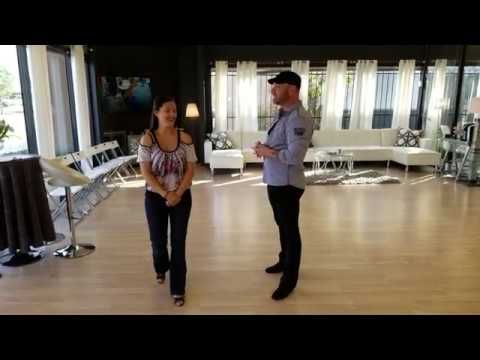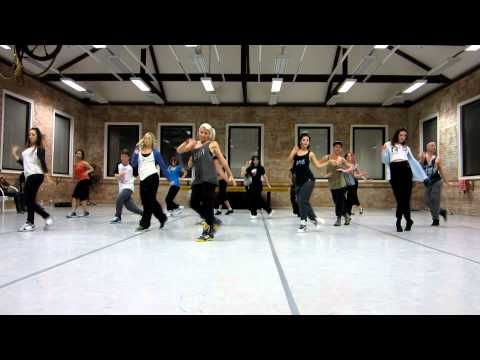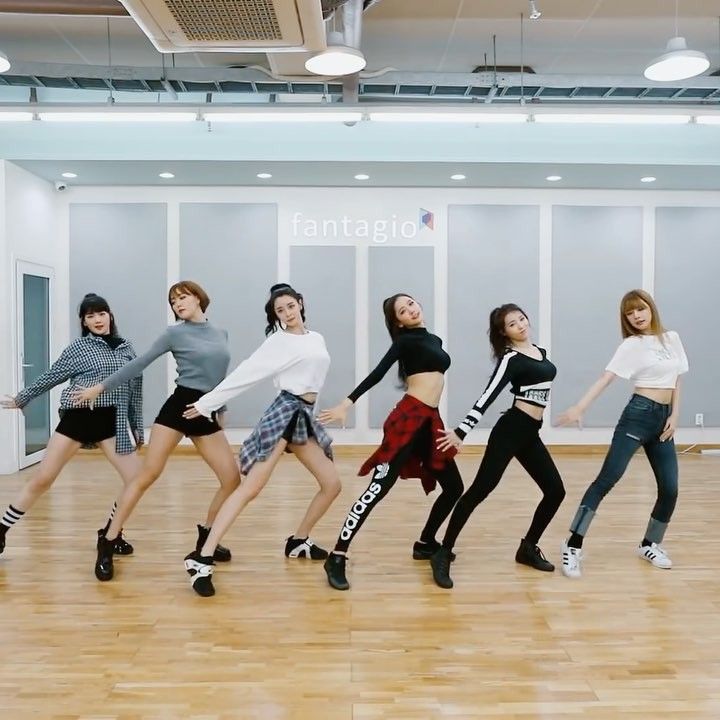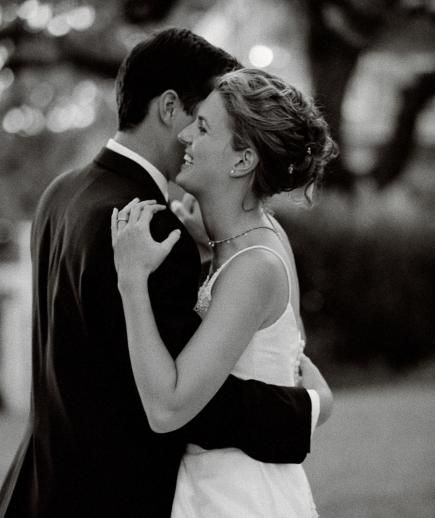How to dance with a tall guy
Managing Height Differences While Dancing
Dancing
Managing Height Differences While Dancing
- - Jorge
One of my friends is a modern progressive follower with old-school romantic preferences: leads to be taller, dark and handsome. Now, for leads, if you are indeed taller, dark and handsome, you’ll likely have success both in romance and on the dance floor. As for me, I have two out of three! We can’t control our height (we actually can, more on this later). So dancers have to accept height differences, their limitations, and chose to partner dance with shorter and taller people anyway.
Don’t be afraid of heights
I believe taller people, particularly followers, have a harder time finding dance partners. Leads have to take initiative and ask a follow to dance. If that follower is taller than them, it’s possible that they’ll become intimidated and their fear of rejection on the dance floor increases, so it’s easier to look for a different partner rather than face that fear. In my experience, taller follows as are just as nice as everyone else and would be delighted if more leads asked them to dance.
Different Height Differences
Let’s use three different sizes for people: Short, Medium and Tall. The possible combinations are:
| YOU | THEM |
|---|---|
| Short | Short |
| Short | Medium |
| Short | Tall |
| Medium | Short |
| Medium | Medium |
| Medium | Tall |
| Tall | Short |
| Tall | Medium |
| Tall | Tall |
| KEY |
|---|
| You’re the same height as your partner! |
| You are taller than your partner |
| You are shorter than your partner |
The height difference between you and your partner is significant and the TALLER of you will likely need to heavily compensate for the other. |
Preparing for the dance
One option to manage height differences, especially if you have a preferred dance partner (or a date), is to prepare ahead of time with appropriate dance wear. Are you taller than your partner? Consider leaving your heels home and use flats instead. Your feet will probably thank you at the end of the night, as well. If you are shorter than your partner, consider heeled dance shoes, whether they be country boots or Latin heeled shoes. For leads as well… show your partner you can both lead them and do your own turns. Remember the friend I mentioned earlier who likes taller, dark, handsome leads? She’s tall, AND loves to wear high heels. Don’t ever feel like you need to sacrifice something to enjoy a dance, as long as you and your partner compromise, you’ll be fine.
Avoid awkwardness
I was at a social salsa dance last weekend, dancing and talking with a girl. She pointed out one of the other male leads and mentioned that she didn’t feel particularly comfortable with him.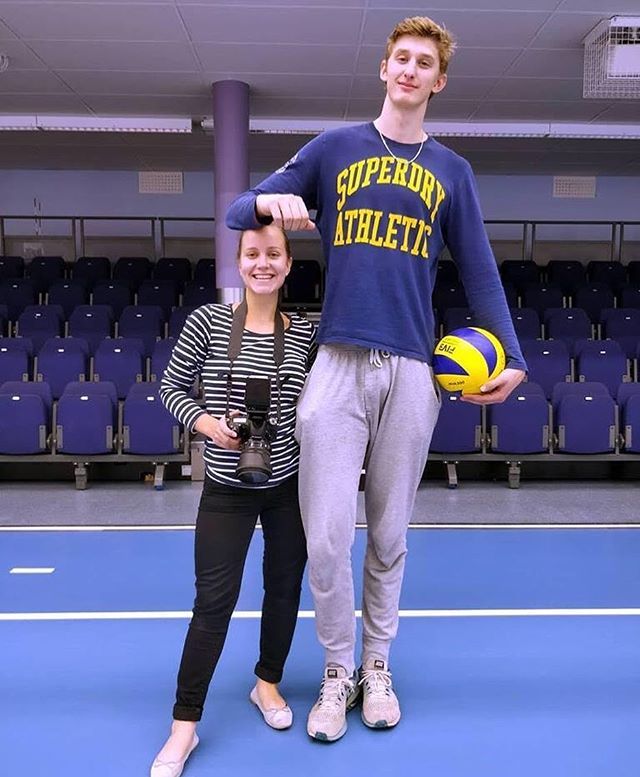 After she described some other red flags like him trying to teach her a move on the dance floor, she also mentioned “and he just kept staring at my chest… I mean, maybe it’s because he’s short, but still.” It was a valid point. While sometimes it’s hard to keep eye contact when someone’s chest is in your peripheral vision, it is possible and you should make an effort. Just don’t make it creepy! I’m not the tallest guy, but I was dancing ballroom a few years ago with a much shorter girl one time. All she did was look up at me, whether I was talking to her or not, directly into my eyes. Comfortable and friendly at first, then odd, then awkward and then uncomfortable. Watch out for dancing quirks, or ask your friends if you have any.
After she described some other red flags like him trying to teach her a move on the dance floor, she also mentioned “and he just kept staring at my chest… I mean, maybe it’s because he’s short, but still.” It was a valid point. While sometimes it’s hard to keep eye contact when someone’s chest is in your peripheral vision, it is possible and you should make an effort. Just don’t make it creepy! I’m not the tallest guy, but I was dancing ballroom a few years ago with a much shorter girl one time. All she did was look up at me, whether I was talking to her or not, directly into my eyes. Comfortable and friendly at first, then odd, then awkward and then uncomfortable. Watch out for dancing quirks, or ask your friends if you have any.
Compensate
When I teach dancing and make students rotate partners, every now and then there will be a pairing with large height differences. The main ways I’ve asked dance students to compensate for this are:
If there’s a significant height difference between you:
- Realize that there are some moves you’re not going to be able to do.

Tabletops where your upper body length are longer than your partner’s arm reach are going to hurt one of you. - If you are leading, check your partner’s limbs length.
Underarm turns at their head level, not yours. Match the stride of your steps to your partner’s. - Don’t be afraid to compensate
Follow the tips for taller and shorter people below. - If you’re having issues learning in a class because of height differences, ask your teacher
A great dance teacher should be able to tell you how to modify a move to make it easier on both of you.
If you are taller than your partner:
- Try to be grounded during non-turning parts of the dance
Relax your knees, maybe bend them a bit. Watch out for short skirts or tight clothing. - Are you turning? Lower your reach
Bring your hand closer towards your head or temple. If still too tall, bend your knees, then turn around on your trip back up - Talk to your partner
That prevents the awkwardness of them having to stare at your body parts.
- Do not overcompensate
Dancing on bent knees the whole night will keep you tired and sore. Be strategic!
If you are shorter than your partner:
- Keep good dance posture
A good dance posture will make you look and feel better, with and added bonus of boosting your height by one or more inches when done right. - Tell your partner of any issues
If something doesn’t feel right, tell your partner. They might just need a quick adjustment, like giving you more space. - Look up and to the sides, not to their chest
Looking at your partner and making eye contact is useful, but don’t over do it. Look to their arms or hands if you’re in a closed position, or to the side past their shoulders. Use floor craft to make sure the both of you on’t run into other couples. - Stay safe
Watch out for elbows if your partner has longer arms than you.
Capitalize!
Where some see limitations, be the one to look for opportunity. I learned this move where I would do a hand throw behind the back, catch it on the other side with the same hand, and then rotate my whole body underneath it and around it (limbo-style!) to appear on the other side.I was excited and tried it with several women, but my lower back was not happy. When I tried it with taller women, it worked amazingly well! I got comments like “Wow!” and “Where did he go?” I’ll file that under success.
I learned this move where I would do a hand throw behind the back, catch it on the other side with the same hand, and then rotate my whole body underneath it and around it (limbo-style!) to appear on the other side.I was excited and tried it with several women, but my lower back was not happy. When I tried it with taller women, it worked amazingly well! I got comments like “Wow!” and “Where did he go?” I’ll file that under success.
Shorter people can also get air! Try jumping during your next turn for an extra oomph. Enjoy it while it lasts!
Relax
Like many human interactions, over-worrying can become a self-fulfilled prophecy. Your height differences issues will project onto your partner, making them reciprocate the feeling, culminating in a lousy dance experience.
Tell yourself it will be fine. Even small changes and adjustments in position will work. If you’re unsure if a move will work or not, tell your partner “hey, I want to try this move out, but it might be tricky. Want to give it a try?”
Want to give it a try?”
No, You're Not Too Tall to Dance. Here Are 3 Tips for Tall Dancers!
Am I too tall to dance? Too short to dance? Too fat or skinny to dance?
No, you are not too tall to dance. You are not too short to dance. And no, you are not too fat/skinny/lanky/whatever to dance.
Among the questions we get from our readers and STEEZY.CO members, the ones related to body size and shape are the most personal.
Body image is already a sensitive topic; now couple that with how your body looks when it's dancing.
I can understand the frustration in not looking or moving the way you want, and how self-conscious that can make you feel.
But – the beautiful thing about dance (especially Hip Hop and Street/Funk styles) is that they are not exclusive to any one body type.
In fact, one of the core principles of many of these dances is to embrace and celebrate individuality.
Which means that there is no right or wrong way to look.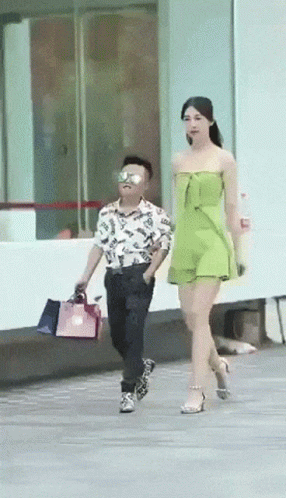 And your unique body is what allows you to move in your own unique way.
And your unique body is what allows you to move in your own unique way.
So the sooner you get comfortable in your own skin, the sooner you can own how beautifully you move in it.
In this article, we'll focus on height – why you are not too tall to dance, and how you can embrace your height to become as dope as your inspirations... however tall or short they are.
Tips for tall dancers
1. Complete each move by using your own "energy ratio"
A common narrative for dancers who think they are too tall to dance is that they can't move as smooth, full-out, or as quick as shorter dancers.
But this is not true. Tall dancers can be just as smooth, full-out, and quick as anyone else. You just have to figure out how much energy to use.
In one of Carlo's classes, he says that it's not about using the same quantity of energy to create a move, rather, a ratio of energy.
Taller bodies and longer limbs have a further distance to "travel" to complete a move, so more energy needs to be exerted.
Basically, don't box yourself in to a smaller or less powerful move because that's what someone shorter is doing.
A lot of the flimsiness or awkwardness you might experience actually comes from not committing enough energy into completing your movements.
In this Reddit thread, DanceBanana shares this fun fact:
In any kickline (regardless of physical size) all participants are asked to kick their leg to be level with their own eyeballs. This gives the illusion of legs being one height, when in reality they could be 2 feet difference between them, but simply because everyone's legs are in the same relationship to their body it appears as one line.
Let's see this idea in action.
In this Chris Martin video, you can see Larkin Poynton, who's well over 6 feet tall, dancing next to Crisila and Sorah, who are both around 5'1" or 5'2".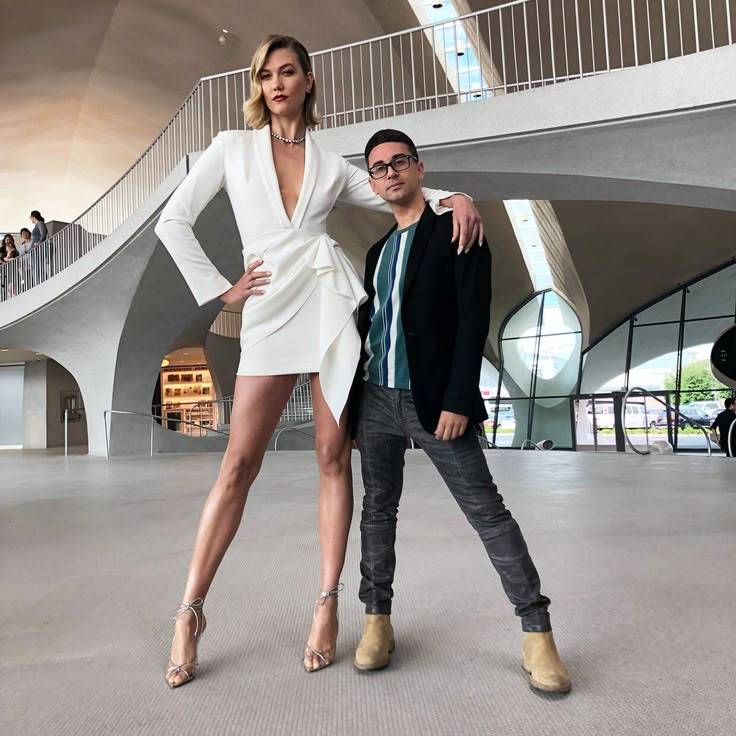
Notice how he does not try to dance smaller than his body demands. He adapts all the moves to fit his taller frame and fill out the space he needs.
By not compromising his execution, he looks in-sync with everyone else in the video.
2. Leverage your height
There are certain movements that one dancer can do that no one else will be able to replicate exactly because of our different bodies.
I can train in Popping for years, and I still won't dance like Kid Boogie because he's just built so much bigger.
I can match his energy on my body, but it's still my body.
And Kid Boogie can go into full K-Pop training mode for years, and still won't look like the super thin and delicate 2NE1 girls. (He'd kill it his own way, though.)
There are certain ways that you can move thanks to your height, that shorter dancers aren't able to achieve.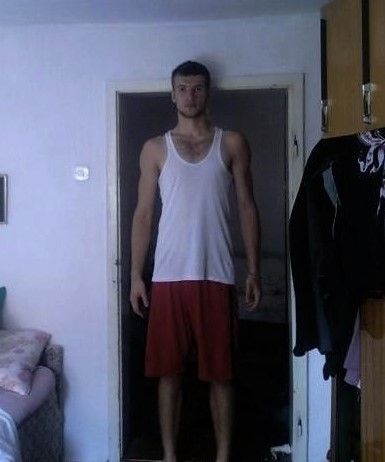
For example, your bent legs look more dramatic because you can cover more distance to reach that level.
And your legs would be placed further apart, creating more negative space for a more interesting picture.
Another example, you can showcase intricate movements much more clearly. Let's say you're doing an isolated arm movement or a gentle head-look.
You won't look like you're over-doing a move that's supposed to be subtle. Rather, it'll fit your body and the audience can read the move more easily.
We can all find things that work to our bodies' advantage.
3. Fake it 'til you make it
If it's difficult to use your height fully, right away, especially if being tall has been an insecurity for a long time.
A trick you can use is to (momentarily) lie to yourself.
Pretend you are the same height as the choreographer you're learning from – this will trick your brain into finding what feels "correct" to you at that height.
Or pretend that every single person in the world is 8 feet tall, and you're freestyling in the middle of them. Because "tall" and "short" are subjective.
Because "tall" and "short" are subjective.
They're just comparative.
If you have mental barriers keeping you from feeling comfortable at your height, then use this trick until you can see how capable you are of dancing however you want.
Tall dancers who use their height to their advantage
Here are some dope dancers in the game who will make you realize that you have an advantage, not a handicap.
Larkin Poynton
Anthony Lee
Ian Eastwood
Madd Chadd
Slim Boogie
You cannot change the fact that you're a tall dancer, so (tough love alert) it's a useless thing to worry about.
What you can control, however, are the more important things – how hard you train, how aware you are of your body, how creative you get with your movements.
And you can train all of those on STEEZY Studio!
The classes, which you can take in private, will help you grow more comfortable and confident as a dancer.
No matter your height.
I recommend the Urban Dance Basics and Beginner Hip Hop Programs, and the 10-minute Daily Grooves classes.
Taking them is the perfect way to try out these 3 tips. Click the link to start getting comfortable in your own body.
It's completely free for 7 days, and you can cancel at anytime – no risk, all reward. Let's go.
practical tips that will come in handy in different situations
For some, the question of how to slow dance becomes relevant in school years, and for some, only at the institute. Well, someone will take care of the issue of slow dance technique only by the day of their own wedding. Well, let's figure out how to learn such an important thing!
Well, someone will take care of the issue of slow dance technique only by the day of their own wedding. Well, let's figure out how to learn such an important thing!
How to slow dance at school discos: advice for guys
This question is equally important for both girls and boys. Only here it is necessary to pay attention to several different points. As a rule, a guy invites you to dance. It must be done correctly. The young man approaches the girl and asks if she is dancing. If your throat is dry from excitement, you can simply stretch out your right hand with your palm up - this is a generally accepted inviting gesture. If the girl agrees, she bows her head and puts her hand over the guy's outstretched hand.
A young man, before dancing a slow dance, should learn that in the process he should not cling to the girl too much. Feeling her figure, trying to grab her hips is not the best course of action. It is much more correct to smoothly lead the partner, embracing her by the waist with her left hand, and the girl’s right hand should be held in her hand, slightly bent at the elbow.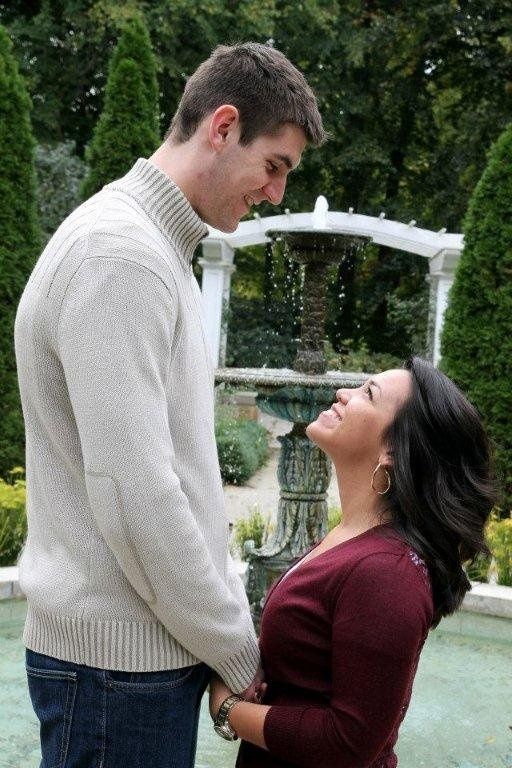 It would be nice to get in time with the music (at least not try to "overtake" the rhythm). In order not to doubt how you look in the eyes of a partner, it would be nice to rehearse in front of a mirror how to invite a girl. And in how to move to the beat of the music, it also does not hurt to practice!
It would be nice to get in time with the music (at least not try to "overtake" the rhythm). In order not to doubt how you look in the eyes of a partner, it would be nice to rehearse in front of a mirror how to invite a girl. And in how to move to the beat of the music, it also does not hurt to practice!
What should a girl know?
Before being interested in how to slow dance, a girl needs to learn how to accept or refuse an invitation correctly. If you agree to dance, bow your head and take the outstretched hand. If not, do not shake your head frantically and loudly declare that you do not want to dance with this individual. Just shake your head and apologize.
In the dance, you should not hang yourself on your partner's neck, lay your head on his shoulder (unless, of course, you are an official couple). It is definitely not worth taking on a leading role and trying to lead. It's the guy's prerogative. That's all! There is nothing complicated about how to slow dance with a guy, no! You just need to demonstrate the femininity that is characteristic of girls.
For both girls and guys, in order to understand how to slow dance, it is worth watching a couple of films - this will become an object lesson.
How to learn to slow dance at solemn events?
Of course, a slow dance at a school disco is significantly different from a dance at a social reception or, for example, a dance of newlyweds. To make the right impression, you need to practice first. It is not necessary to dance tango and waltz at a professional level, but it is still better to learn the basic movements. This will allow you not to goof off at an important event.
A very important moment for girls is the ability to dance in high heels and in a long dress. This is not so easy, but you need to practice in order to learn how to move so as not to step on the hem with your heels.
That's all! Mamita Dance0032
psychologist, salsa and tango teacher
At the start, you always want to get a quick result. When it doesn't happen, the hypothesis arises that everything takes time.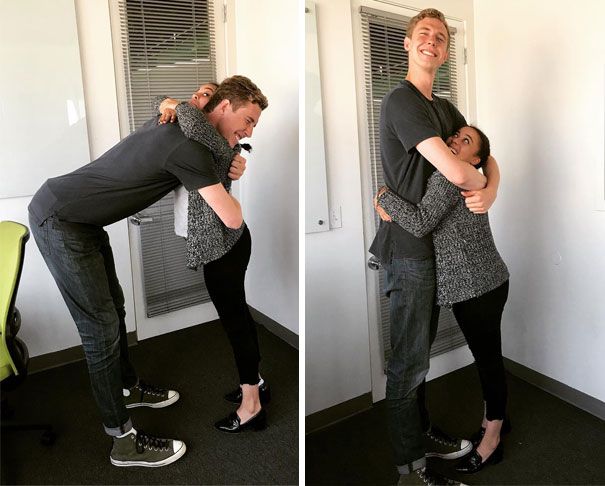 After a conditionally acceptable time, humility comes to mastering pair dances, which, perhaps, is not given, and I will just do what I learned somehow.
After a conditionally acceptable time, humility comes to mastering pair dances, which, perhaps, is not given, and I will just do what I learned somehow.
This is the most common story of those who believe that the fact of attending pair dance classes is enough to learn how to dance.
Absolutely not. If you want to really dance well, you have to make an effort outside of the dance class. A good teacher will definitely be needed, but the initiative should be on your side.
1. Listen to music
The most common and accessible advice that is given already in the first lessons. And it definitely works. Music creates a certain atmosphere of the dance and intuitively you want to move to it. It doesn't matter where you listen to music - in the car, on headphones while walking or doing household chores.
An addition that will help you dance better is your active participation in the music. Sing along, dance or simply beat musical accents with any free parts of the body.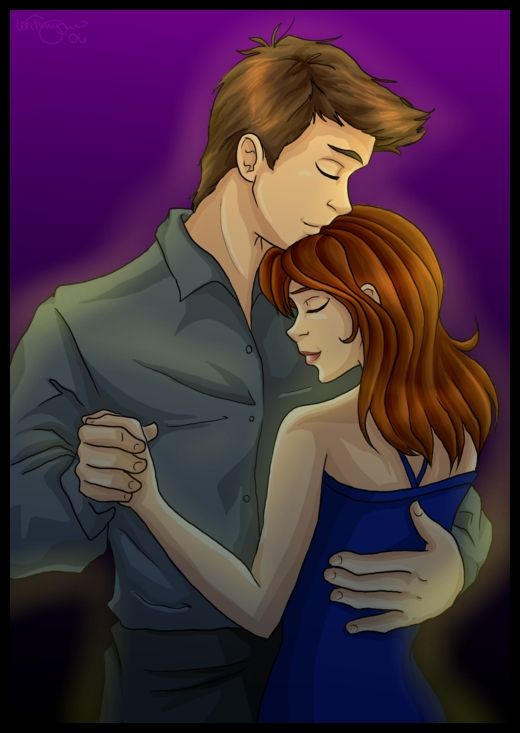 In the subway, for example, it is enough to tap out bright moments with your fingers, in the car to sing along with sounds, and at home you can jump for pleasure.
In the subway, for example, it is enough to tap out bright moments with your fingers, in the car to sing along with sounds, and at home you can jump for pleasure.
2. Watch videos of good dancers
It's complicated, but also obvious. It’s more difficult, because without recommendations from more experienced dancers, unfortunately, it’s not so easy to find a good quality video on the net (I mean not the resolution quality, but the content itself).
Meaningful video viewing is about building an understanding of HOW dancers make a particular impression on a partner or viewer. Technology is at the heart of everything. Understanding how the pros do it is a big step forward.
It is important to distinguish a show from a disco dance, a choreographed performance from an improvisation, a stylized dance from an authentic one, etc. Ask for recommendations, and dance instructors will always upload a couple of videos of worthy landmarks.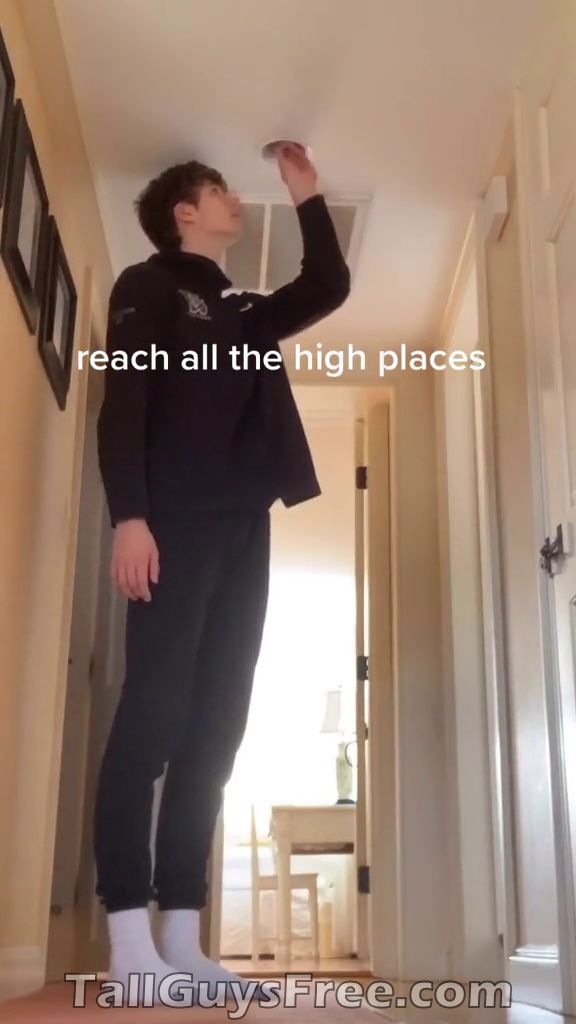
Tango Z. Showreel.
Online modern tango courses
Tango nuevo is the most advanced version of tango. We can quickly learn to dance from zero to a steep level.
| View details |
3. Dance in salsatecas/milongas/discotheques
A very delicate moment when it is worth coming to the first party. From a technical point of view, most students in 1-3 months have a sufficient set of figures and techniques to come and dance calmly. Psychologically, the same moment can be stretched out for an indefinite time. After all, it is imperative to “not lose face”, “learn more figures” and be sure what to do in case “there is an unfamiliar movement”.
In fact, the partygoers don't really care (except for a small layer of non-professional teachers who want to help inexperienced dancers by treating them as customers in the future). It is important to come and try dancing after a month of classes.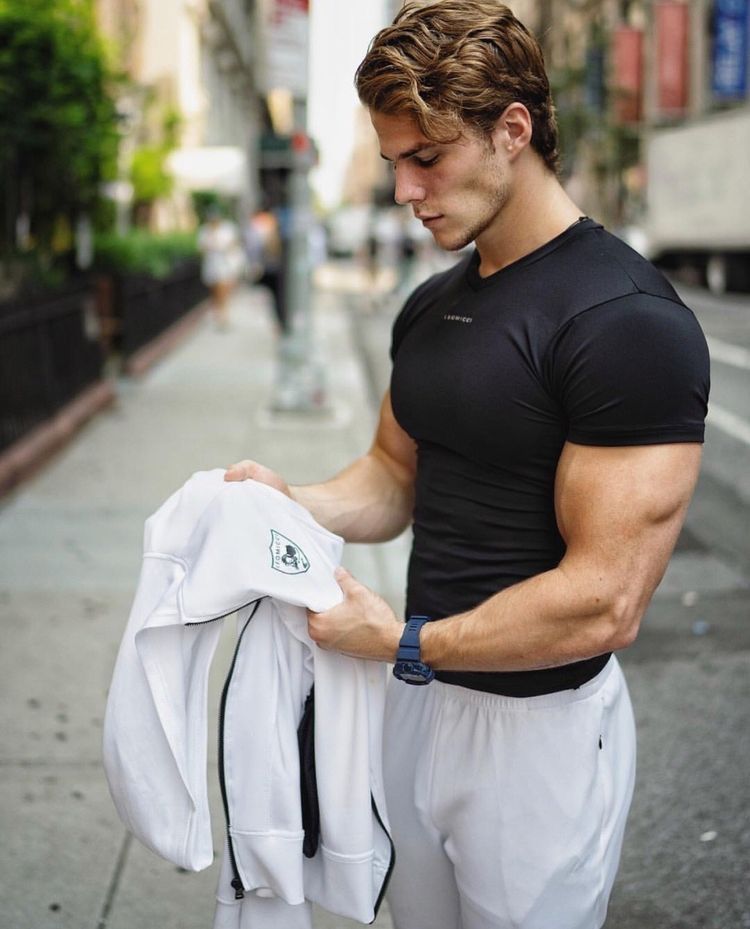 You can only with friends or guys from your group. This will be enough to feel the adrenaline and inspiration from the dance.
You can only with friends or guys from your group. This will be enough to feel the adrenaline and inspiration from the dance.
4. Dance with partners or partners not of your level
The conventional wisdom that you need to practice in groups of your level does not stand up to the test of experience. Perhaps now your eyes widened in surprise, and you want to meaningfully read the phrase again. Yes, you saw everything correctly: when you dance with a partner of your level, you don’t grow anywhere.
It's important to understand that not only does it work one way and you have to dance with cooler dancers, but it works even more effectively the other way. It is no coincidence that teaching pair dances dramatically raises the level of the teacher himself. You have an endless stream of very beginner dancers.
How it works. A more experienced partner needs to be "stretched". It's easy and obvious. With beginners, you need to take more initiative on yourself, see the general pattern of the dance more widely, turn on and insure more, try to be an example and be more careful.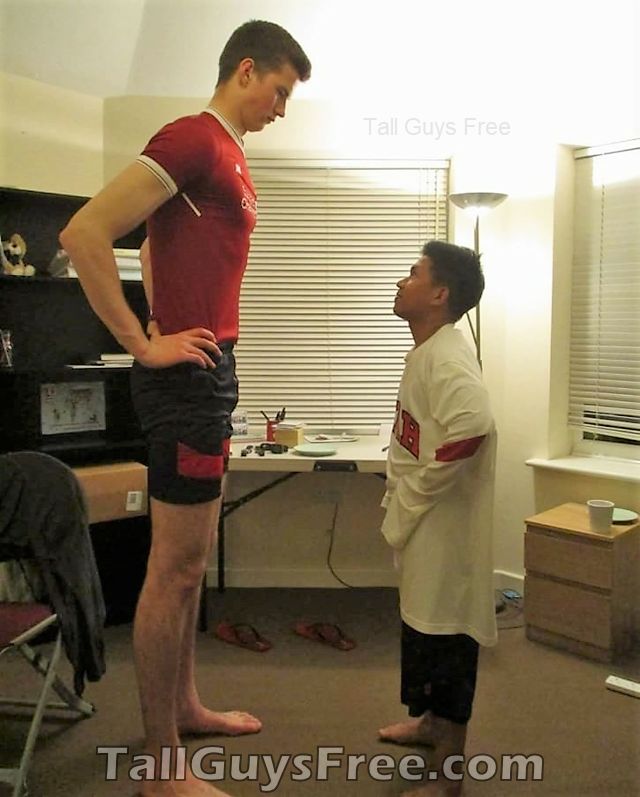 The quality of interaction begins to grow significantly. And wonderful partners too.
The quality of interaction begins to grow significantly. And wonderful partners too.
Dancing with partners of your level doesn't make you grow. Dance with beginners and more advanced dancers
Dominican Bachata Women's Style Online Course
Want to learn how to hypnotize those around you with the most appetizing part of your body? On the course we will tell you all the secrets.
| Interesting |
5. Learn to dance for a partner and for a partner
Turks and Argentines are one of the best partners in the world. In Russia, partners are highly valued. Why? The answer is simple. In Argentina and Turkey, it is not questionable for men to ask another man to lead in one piece or another and give feedback on the quality of the lead. For them, it will be a great shame to hear moralizing from a partner, or even more so to be known in the community as an insecure partner.
In Russia, due to the constant, often far-fetched, opinion that there are more women in pair dances, partners calmly get up and study their partner's part. Such partners then grow into very cool dancers and teachers. In no case do this at parties, only in class. Here we are talking only about the learning strategy. At parties, be yourself.
Such partners then grow into very cool dancers and teachers. In no case do this at parties, only in class. Here we are talking only about the learning strategy. At parties, be yourself.
6. Do not memorize the links
Always try to look deeper and understand the through principle and idea of movement. Understanding what and how is done will make it possible to independently generate any sequences and chips.
Human memory is limited and there will always be a moment when something will escape and your repertoire will be limited by the size of RAM.
In Argentine tango, for example, there are seven levels of movement construction that, when mastered, will allow you to make millions of combinations. And how many dance sequences can you really remember? In rueda, more than 150 figures dance in a rare circle. It's hard to keep more in mind.
7. Develop your body
Many years of experience in teaching pair dance shows that as soon as everyone pairs up in a class, any progress in individual style ends. But it is the individual style that distinguishes everyone at the disco: partners change, and style is always with you.
But it is the individual style that distinguishes everyone at the disco: partners change, and style is always with you.
The body as the main instrument of dance must be very plastic, responsive and emotional. Surprisingly, not all pair dance schools have a general physical warm-up. It is vital to tune the body and understand how it works.
You can always train extra and concentrate more on the basic steps, as their true value is as body work. The sequence of steps is, in fact, the simplest thing that can be in pair dancing. The quality of individual performance determines the craftsmanship.
8. Try on the images of inspiring dancers
A psychological life hack for those who have already mastered the steps, but still feel that there is not enough brightness and drive. Most are terribly afraid of being someone else's "clone". Here the action is the same as under the influence of hypnosis - the more you resist, the more you plunge into an altered state of consciousness.
With a high degree of probability, you are already dancing like someone else's "clone". A meaningful fitting of someone else's image is that you mentally take the image of the one who inspires you (inspiration is critical in this case) and "put on" yourself. Then you start dancing and trying to feel in general how it is to be able, for example, to be the best partner or the sexiest partner in a disco. This is much more difficult than it seems. But it works extremely efficiently.
9. Dance to offbeat music
Habitual rhythms keep you tight. Tango salon or speedy timba leave little room for experimentation and fantasy. Pattern dancing is always noticeable and is reserved for beginners.
The truly new is born outside of the usual. Look for places to experiment. If there is no place, organize self-training. The main thing is not to get carried away, because music determines the style. We bring something new to pair dances, rather than trying to change them.
Search, improvise, don't be afraid to go beyond, develop in different directions, be inspired by music atypical for the style
10. Try your hand at basic dance directions
dances exist according to their own non-choreographic laws.
This is the deepest delusion, which has turned into a ceiling for the qualitative development of partner dances. After all, all professional dancers, for example, in salsa or bachata, build their ideas on the basic choreographic principles.
Do not think that choreography is only applicable on stage. Any meaningful movement of the body can be choreographic. In general, try classical or modern choreography. Basically, hip-hop can work too.
11. Look for battle sensations
Pair dances return us to an active position of manifestation of our body. As in the days of our ancient ancestors, we impress the members of the opposite sex by how dexterous, hardy, sexy, etc. we are. Modern laws of the jungle in the entourage of big cities.
As in the days of our ancient ancestors, we impress the members of the opposite sex by how dexterous, hardy, sexy, etc. we are. Modern laws of the jungle in the entourage of big cities.
If you look around the dance floor, it becomes clear that the majority are clearly herbivores (not in the sense of vegetarians, but in relation to those around them). I am sure that predators are always more interesting in terms of the attractiveness of the image - try to find a counterbalance among herbivores, for example, a cat woman or a lion man.
The conversation is about an internal position, not about aggressiveness. Lability and lack of control are inherent in adolescents, and not in adult self-sufficient people.
Accordingly, even a training or friendly battle gives, on the one hand, practical skills - to make a bright sequence of movements, bring an idea to a climax, show a spectacular feature, on the other hand, develops the psychological basis of the dance - self-confidence, resistance to extraneous attention, self-control and self-control in complex elements.
12. Communicate with professionals
The environment shapes the internal position. Basically, real passionaries of the dance community are ready to openly talk, discuss and support the development of dance in every possible way. Universal principles and the ideas they articulate have a much longer and more practical perspective than meets the eye.
Accept that, for example, behind the words "listen to your partner" is not only a beautiful metaphor, but also a practical skill to literally listen to your partner. At the same time, always treat every thought, even the most respected teacher, as a private opinion.
Your skill will lie in finding the scope of the idea even in conflicting opinions. Most often, the contradiction is speculative and the truth lies in the angle of perception or situationality.
Your dancing growth will stop sooner or later. This can happen at the level of three basic steps or years of experience in teaching and show performances.